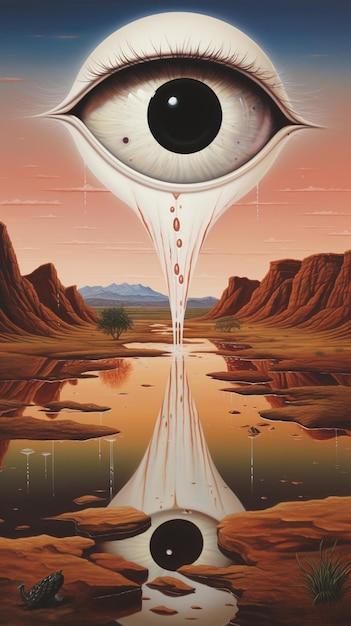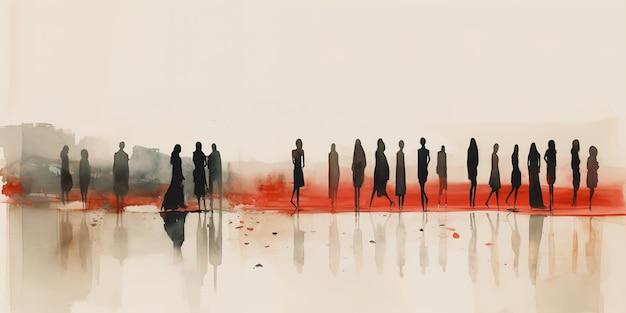Art has always been a powerful tool for expressing the essence of a society. From ancient civilizations to modern times, art has served as a mirror that reflects the values, beliefs, and aspirations of a community. In the present-day society, art continues to play a crucial role in connecting people and encouraging social change. With its ability to evoke emotions and challenge perceptions, art has the potential to bridge gaps between different communities and foster a sense of unity.
In this blog post, we will explore the purpose and value of art in our society today. We will delve into the ways in which art reflects its society, how it can be used to connect with communities, and why it holds such importance. Join us as we examine the impact of art on society and understand why it has the power to change the world.
How Art Reflects Society: A Delightfully Insightful Analysis
Understanding the Connection
Art and society are like two quirky dance partners, swaying together in perfect harmony. Art, in its various forms, has always been a mirror that reflects the values, beliefs, and aspirations of a society. So, let’s put on our spectacles and dive into the fascinating world where brush strokes, melodies, and poetic verses converge to paint the portrait of our society.
The Artistic Kaleidoscope
Art takes many forms, from paintings and sculptures to film, music, and literature. Each manifestation captures a unique perspective on society, offering a tantalizing glimpse into the collective psyche of the people. These artistic creations showcase our desires, struggles, and triumphs, providing a collective voice that transcends time and space.
Painting Society’s Tapestry
Paintings, those captivating works of art that make us ponder, aren’t just pretty pictures to hang on walls. They serve as visual records of history, culture, and societal norms. Take, for instance, the iconic masterpiece, “The Last Supper” by Leonardo da Vinci. This painting not only portrays a biblical scene but also reflects the cultural and religious values of its time, leaving a lasting imprint on our understanding of society in the 15th century.
Sculpting Opinions
Sculptures, those three-dimensional delights that grace public spaces, have the power to stir emotions and provoke contemplation. Think of the Statue of Liberty, standing tall and proud in the bustling city of New York. This monumental sculpture symbolizes freedom and opportunity, embodying the American dream that has shaped society since its unveiling in 1886.
The Silver Screen’s Reflective Glow
Ah, the silver screen! Movies, dripping with drama and charisma, transport us to different worlds while simultaneously reflecting our own. From thought-provoking documentaries to heartwarming comedies, films function as a cultural time capsule, capturing the essence and idiosyncrasies of society throughout the ages. Just think about the 1976 classic “Rocky” – a tale of an underdog boxer fighting against all odds – which not only entertained audiences but also echoed the never-give-up spirit of a struggling America.
The Harmonious Symphony of Society
Music, enchanting and soul-stirring, speaks directly to our hearts. It weaves melodies that bridge linguistic and cultural barriers, unifying society through its universal language. From the soulful blues that gave voice to the hardships of African Americans in the early 20th century, to the rebellious rock anthems of the 1960s that mirrored the counter-cultural revolution, music acts as a reflection of society’s emotions and experiences, resonating with people across generations.
Comedic Relief and Societal Reflections
Humor, the sassy sidekick of art, often takes center stage to shed light on societal absurdities and challenges. Satire, in its witty and biting form, holds up a funhouse mirror to society, exposing its flaws with a mischievous twinkle in its eye. Shows like “The Simpsons” or “South Park” have long been masters of this art, combining sharp humor with social commentary to provoke thought and laughter.
Art is the looking glass through which society peers at itself. It captures our joys, our sorrows, our triumphs, and our tribulations, reflecting the multifaceted tapestry of human existence. From paintings to sculptures, movies to music, art has the power to enlighten, entertain, and engage us in a never-ending dialogue about who we are as a society. So, let’s continue to embrace and celebrate the artistic reflections that remind us that society’s ever-changing dance is beautifully intricate and endlessly fascinating.
FAQ: How Is Art a Reflection of Society
A comprehensive guide to understanding the connection between art and society
Art has always held a significant place in society, serving as a reflection of its values, beliefs, and cultural impact. In this FAQ-style guide, we will explore the role of art and its relationship to society, delving into its purpose, value, and transformative power. Get ready to discover how art influences and connects with our community in the present day.
How does art reflect its society
Art acts as a powerful mirror, reflecting the intricate tapestry of society. Through various creative mediums like painting, sculpture, and music, artists capture the essence of their time and offer poignant commentary. Whether it is the vibrant colors and dynamic brushstrokes of a painting, or the gripping lyrics of a song, art preserves the experiences, struggles, and triumphs of society for generations to come.
What is the role of an artist in society
Artists play a pivotal role in society, serving as catalysts for change, provoking thought, and challenging norms. They have the extraordinary ability to provoke emotions, spark conversations, and inspire action. Artists capture the essence of their surroundings, expressing their perspectives, and prompting viewers to question the world around them. In doing so, they become agents of social change, driving progress and shaping society’s evolution.
How can art help the community
Art has the power to bring communities together, fostering a sense of unity and understanding. Artistic expression transcends language and cultural barriers, providing a platform for diverse voices to be heard. By engaging with art, individuals find solace, inspiration, and connection. Art events, exhibitions, and workshops create opportunities for people to share experiences, celebrate their shared humanity, and engage in meaningful dialogue.
What is the importance of art
Art is a vital component of our society, enriching our lives in countless ways. It grants us a deeper understanding of our history, culture, and heritage. Through art, we can explore different perspectives, challenge our assumptions, and broaden our horizons. Art inspires creativity, critical thinking, and empathy, nurturing qualities that are essential for personal and societal growth. In short, art adds color, meaning, and beauty to our lives.
Is art a reflection of reality
Indeed, art is a reflection of reality, but also a reinterpretation of it. Artists infuse their creations with their unique perspectives and emotions, presenting their own versions of reality. Through their work, they invite viewers to explore, question, and contemplate the world around them, ultimately broadening our understanding and challenging our preconceived notions.
How does art reflect the strength and culture of a civilization
Art serves as a testament to the strength, resilience, and cultural significance of a civilization. Throughout history, art has documented pivotal events, celebrated achievements, and showcased the traditions that define a people. The grandeur of ancient architecture, the intricate details of traditional clothing, and the captivating rhythms of indigenous music all reflect the rich heritage of a civilization. By preserving and showcasing their art, civilizations leave behind a legacy that reverberates through time.
What benefits does art provide society
Art offers numerous benefits to society, extending far beyond mere aesthetics. It encourages creativity and innovation, nurturing the minds of future inventors, scientists, and leaders. Art stimulates critical thinking, helping individuals question and challenge existing norms. It promotes empathy and understanding, bridging gaps between different communities and fostering social cohesion. Moreover, art improves mental well-being, providing an outlet for expression and catharsis. In essence, art is a catalyst for personal growth, social change, and cultural preservation.
Art has the remarkable ability to reflect, engage, and transform society. Artists, through their creative pursuits, capture the essence of their time, inspiring dialogue, sparking change, and leaving an indelible mark on the world. By embracing and celebrating art’s role in society, we can foster a greater appreciation for our collective human experience and build a more inclusive and vibrant community.

